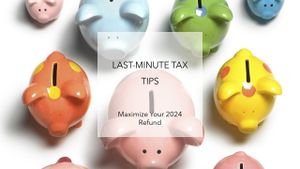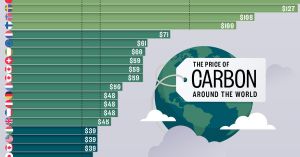The recent decision by President Donald Trump to impose tariffs on imports from Canada, Mexico, and China has sparked widespread concern among economists and industry leaders about the potential economic fallout. Signed over the weekend, the tariffs include 25% on imports from Canada and Mexico and 10% on those from China, with many predicting significant impacts on inflation and interest rates.
Trump's tariffs are set to take effect Tuesday, creating uncertainty for U.S. consumers who are already struggling with high borrowing costs. While the 25% tariff on Mexico has been delayed for a month following talks with Mexican President Claudia Sheinbaum, the tariffs on Canada and China are proceeding as planned.
Experts warn the tariffs could drive up U.S. consumer prices significantly, posing challenges for the Federal Reserve's plans to lower interest rates. Inflationary pressures could hinder the Fed's ability to cut rates, with projections indicating potential price increases of 0.5 to 1 percentage points through 2026 as tariffs start to bite. Paul Ashworth, chief North America economist at Capital Economics, noted this pressure may “slam shut” any opportunities for rate cuts over the next 12 to 18 months.
The economic situation surrounding tariffs remains fluid. Although Trump’s administration initiated these tariffs, sudden policy changes and negotiations introduce levels of unpredictability, complicate the analysis for economists. Susan Collins, president of the Federal Reserve Bank of Boston, acknowledged, “There's a lot of uncertainty about how policies will evolve.”
The growing concern extends beyond inflation. Tariffs on key building materials from Canada and Mexico, such as softwood lumber and gypsum, may also exacerbate the already struggling U.S. housing market. Reports indicate home prices have surged by over 40% since the pandemic began, with many first-time buyers finding it increasingly difficult to navigate the market.
According to industry professionals, over 70% of imports for these materials come from Canada and Mexico, which indicates the tariffs are likely to escalate construction costs, passing those expenses onto consumers. Carl Harris, chairman of the National Association of Home Builders, stated: “Tariffs on lumber and other building materials increase the cost of construction and discourage new development, and consumers end up paying for the tariffs.”
Currently, building materials' costs are forecast to increase by $3 billion to $4 billion if tariffs are fully enacted. Sheryl Palmer, CEO of Taylor Morrison, highlighted the pressure these tariffs impose, stating, “Even with smaller portions of our lumber coming from Canada, all builders will feel the impact—which, in turn, can affect consumers and their ability to purchase homes.”
The factors contributing to rising home prices are compounded by broader issues, including high mortgage interest rates and labor shortages exacerbated by policy changes related to immigration. With approximately 30% of the construction labor force being immigrants, the impacts of treatment and deportation policies could eliminate key workforce members, making home building even more challenging. Bruce McNeilage, CEO of Kinloch Partners, emphasized the gravity of this issue by asking, “You can run them all out of the country, but who's going to build houses?”
Jaret Seiberg, housing policy analyst at TD Cowen Washington Research Group, remarked on the potential consequences of the tariffs: “This could worsen the affordability crisis for first-time buyers. On the plus side, it could increase pressure on Congress to enact policies encouraging entry-level construction, including expanded tax credit programs.”
The growing layers of economic realities and emotional perceptions related to personal wealth are set to collide as spring approaches, traditionally a favorable market season for homes. With raised costs, fewer buyers might have enough cash for down payments, suppressing the already fragile housing market.
Further complicate the economic outlook, if inflation rates rise again as expected, anticipated drops in interest rates may vanish. Stephen Brown, deputy chief North America economist at Capital Economics, pointed out, “If the tariffs go through, the Fed is unlikely to cut rates again.”
The introduction of tariffs on key imports poses significant threats not only to inflation and consumer spending but also to housing affordability, highlighting the complex intertwining of policies, economics, and market behavior. Only time will tell the ultimate consequences of these decisions. President Trump’s administrations' economic policies and initiatives need careful observation as they continue to evolve amid sharp criticisms and varying industry responses.



